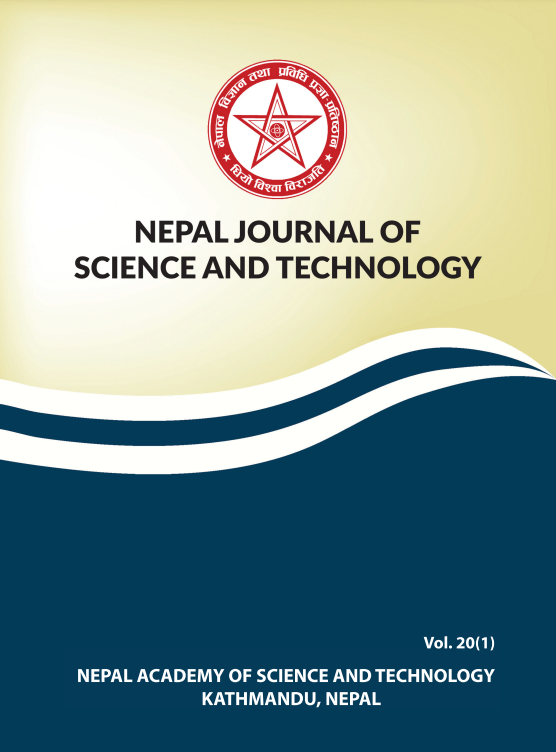Nutritional value and antioxidant properties of Diospyros malabarica (Desr.) Kostel., fruit from midhills of western Nepal
DOI:
https://doi.org/10.3126/njst.v20i1.43361Keywords:
Persimmon, Diospyros malabarica, nutritional composition, phytochemicals, antioxidant activity, NepalAbstract
Fruit consumption has long been recognized for its beneficial impact on human health. Persimmon fruit (Diospyros malabarica (Desr.) Kostel.) is a popular wild edible fruit distributed in mid-hill regions of Western Nepal and is used in treatment of various ailments by local people. Although, persimmon is a popular fruit, its significant nutritive values and bioactive compounds are still unexplored in Nepal. This research on nutritional and phytochemical analysis of persimmon fruit pulp was carried out using standardized analytical methods (Association of Official Analytical Chemists, AOAC) and microplate spectrophotometry with ultraviolet (UV) detection. The results revealed that the fruit is rich in sugar (66.52±2.17 mg /g), fiber (103.95 mg/g), ash (107.44 mg/g) and total phenolic content (112±2.89 mg GAEs/g) and the mild supplier of antioxidants.
Downloads
Downloads
Published
How to Cite
Issue
Section
License
Copyright (c) 2021 Rachana Shrestha, Prabin Dawadi, Santoshi Bhusal, Lok Ranjan Bhatt

This work is licensed under a Creative Commons Attribution-NonCommercial 4.0 International License.
Authors retain copyright and grant the journal right of first publication.




